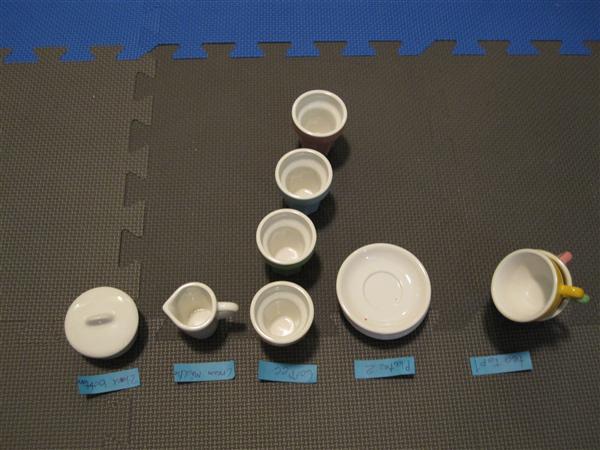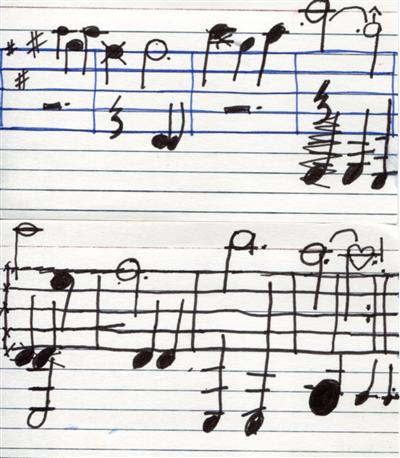Tuesday: We’ve had a pretty good couple of days.
Yesterday I picked M up from school at about 3:30 so we could practice before dinner. We ended up practicing both before and after dinner. We did a lot: Rhythm Bible, reading her quartet music, playing the Bach Tanz, Meadow Minuet, and Allegro, plus French Folk Song. M was generally a trooper, though we didn’t start off well (I tried to get started on harmonica, but she wasn’t doing what I told her, so I put it away.)
Today, we had only about 1/2 an hour, so we did a little harmonica to ease into things and then worked on the Bach Tanz.
My main goal continues to be helping M learn to concentrate all the way through a song. She still can’t do it.
But I have noticed one thing that works. Whenever M decides to have “stage presence” — namely, to smile and sit up straight — she also does a much better job looking at her hand and focusing on her playing. So today, after she had played the Bach Tanz with some notable mistakes (including skipping a measure in the C section) and had then played it a few times while staring into space, I reminded her to try to have good stage presence. She sat up and put on a fake smile and proceeded to focus on her playing much more effectively than she had before. For some reason, lately at least, focusing on stage presence more than anything else (e.g., tone, legato phrasing, dynamics) gets her to focus on her playing.
Also, she’s doing well with her two assignments from her teacher: tone exercises (a-m-i on the 1st string, descending chromatically down the scale) and thumb strokes. In fact, today she decided to keep going on her tone exercise even after she had done the assigned repetitions.
We have been skipping the free-stroke exercises that led to conflict last week. But her right-hand technique is getting better when I instruct her to play without resting her thumb on the lower strings. When the thumb is resting, she tends to play with a grabbing motion; but when the thumb is up, she does a much better job moving her fingers from the knuckle joint.

